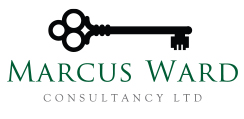VAT Inspections
The first point to make is that inspections are usually quite standard and routine and generally there is nothing to worry about. They are hardly enjoyable occasions, but with planning they can be made to go as smoothly as possible. As an inspector in my previous life, I am in a good position to look at the process from “both sides”. If you are concerned that the inspection is not routine (for any reason) please contact us immediately.
Background
Typically, the initial meeting will begin with an interview with the business owner (and/or adviser) to go through the basic facts. The inspector will seek to understand the business and how it operates and will usually assess the answers with specific tests (further tests will be applied to the records). After the interview the inspector(s) will examine the records and will usually have further queries on these. More often than not they will carry out; bank reconciliations, cash reconciliations, mark-up exercises, and often “references” which are the testing of transactions using information obtained from suppliers and customers. There are many other exercises that may be carried out depending on the type of business. Larger businesses have more regular inspections where one part of the business is looked at each meeting. The largest businesses have more or less perpetual inspections (as one would expect). The length of the inspection usually depends on:
- Size of the business
- Complexity of the business
- Type of business (HMRC often target; cash businesses, the construction industry, property investment, partially exempt businesses, charities and NFP entities, cross-border transactions and financial services providers amongst others)
- Compliance history
- Associated/past businesses
- Intelligence received
- Errors found
- Credibility of the business owner and records
The above measurements will also dictate how often a business is inspected.
More details on certain inspections/investigations here
The initial inspection may be followed by subsequent meetings if required, although HMRC state that they aim is to conclude matters at the time of the first meeting.
The inspection – how to prepare
- Ensure that both the person who completes the VAT returns and the person who signs the VAT returns will be available for all of the day(s) selected
- Arrange with your adviser, to be available to you and the inspector on the days of the inspection
- Thoroughly review your VAT declarations and have ready, if relevant, any disclosures or other declarations you consider you need to make to HMRC at the start of the inspection (this should avoid penalties)
- Have available all VAT returns and working papers for the last four years or the period since you were registered for VAT including:
- Annual accounts
- The VAT account and all related working papers
- All books and accounts, cashbook, petty cashbook, sales and purchases day books
- Sales and purchase invoices
- All supporting documentation, eg; contracts, correspondence, etc.
- Bank statements
- VAT certificate and certificate of registration
- Any other documentation relating to “taxable supplies”
- Have available the full VAT correspondence files ensuring that they are fully up-to-date
- Ensure you have full information on any; one-off, unusual or particularly high value transactions
The inspection – during the visit
- Ask the inspector(s) to identify themselves by name on arrival (they carry identity cards)
- Be polite, friendly and hospitable as far as possible
- Make a desk or space available for them to work near to you – in this way you can oversee/overlook what they do
- Only allow access to the files that form part of your “VAT Records”
- Enable the VAT inspector, if they ask, to inspect your business premises (and have someone accompany them)
- Be cautious with your answers to seemingly “innocent” questions and comments. If in doubt ask for time to check, or that the question be put in writing (never guess or provide an answer which you think HMRC want)
- If something inconsistent is found (or suggested) ask for full details and take note of all of the documentation to which the query relates – this will enable you to provide necessary information to your adviser
The inspection – at the end of the visit
The inspector should:
- Explain the main work they have done. For example which VAT accounting periods they reviewed
- Explain any areas of concern they have, discuss them and seek to agree any future action that needs to be taken; and
- Illustrate as fully as possible the size and reason for any adjustment to the VAT payable, and describe how the adjustment will be made
You should:
- Obtain a summary of the inspection from HMRC (not always an easy task)
- Ask the inspector to put all of HMRC’s concerns about your business to you in writing
- Confirm with the inspector all time limits for providing additional information to HMRC
After the inspection
HMRC will write to you confirming:
- Any issues identified
- Further information required
- Improvements required to record keeping
- Any corrections required
- Whether VAT has been over or under paid
- Any penalties and interest which will be levied
- Deadlines for payment.
On a final point: Never simply assume that the inspector is correct in his/her decision. It always pays to seek advice and challenge the decision where possible. Even if it is clear that an error has been made, mitigation may be possible.
We can provide a pre-inspection review as well as attending inspections if required. It is quite often the case that many HMRC enquiries may be nipped in the bud at the time of the inspection rather than becoming long drawn out sagas. We can also act as negotiator with HMRC and handle disputes on your behalf.
